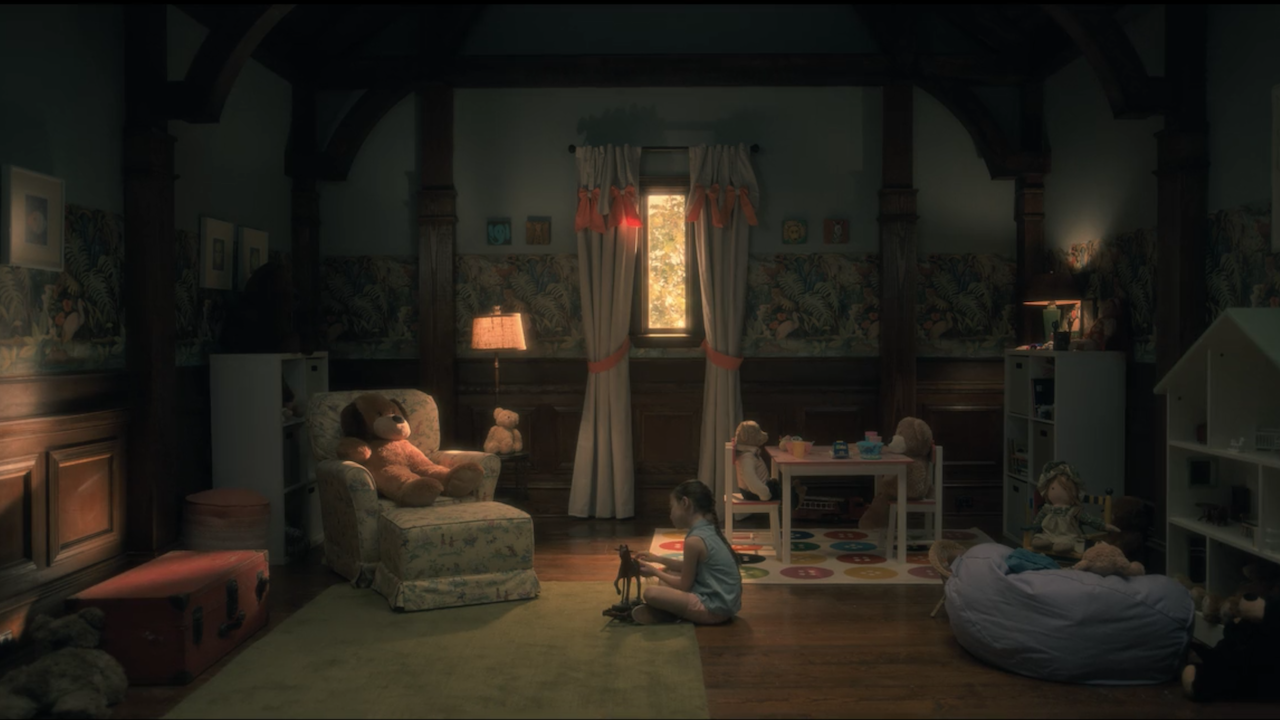Table of Contents Show
Trauma can be evoked in many distinct ways, such as loud noises, yelling, rapid movements, or anything that has emotional significance to you. (( “What Is Trauma? – Definition, Symptoms, Responses, Types & Therapy.” 2018. Integrated Listening. September 19, 2018. )). Trauma rarely results in enjoyable experiences, it typically stems from something distressing in your past that you have not been able to move on from fully, or that has manifested itself in you for so long that you are fearful of it or what it may do when it occurs or when you recollect it. (( “What Is Trauma?” 2019. Psychology Today. 2019. )).
It serves to remind of that experience, no matter whether you are awake or watching a movie, or just taking a shower. Media has portrayed trauma for decades. It is a topic that stays prominent because it is a matter that greatly impacts universal life. One can traverse trauma from many sources: war, verbal abuse, physical abuse, and any other form of trauma including abuse and maltreatment of absolutely any kind.
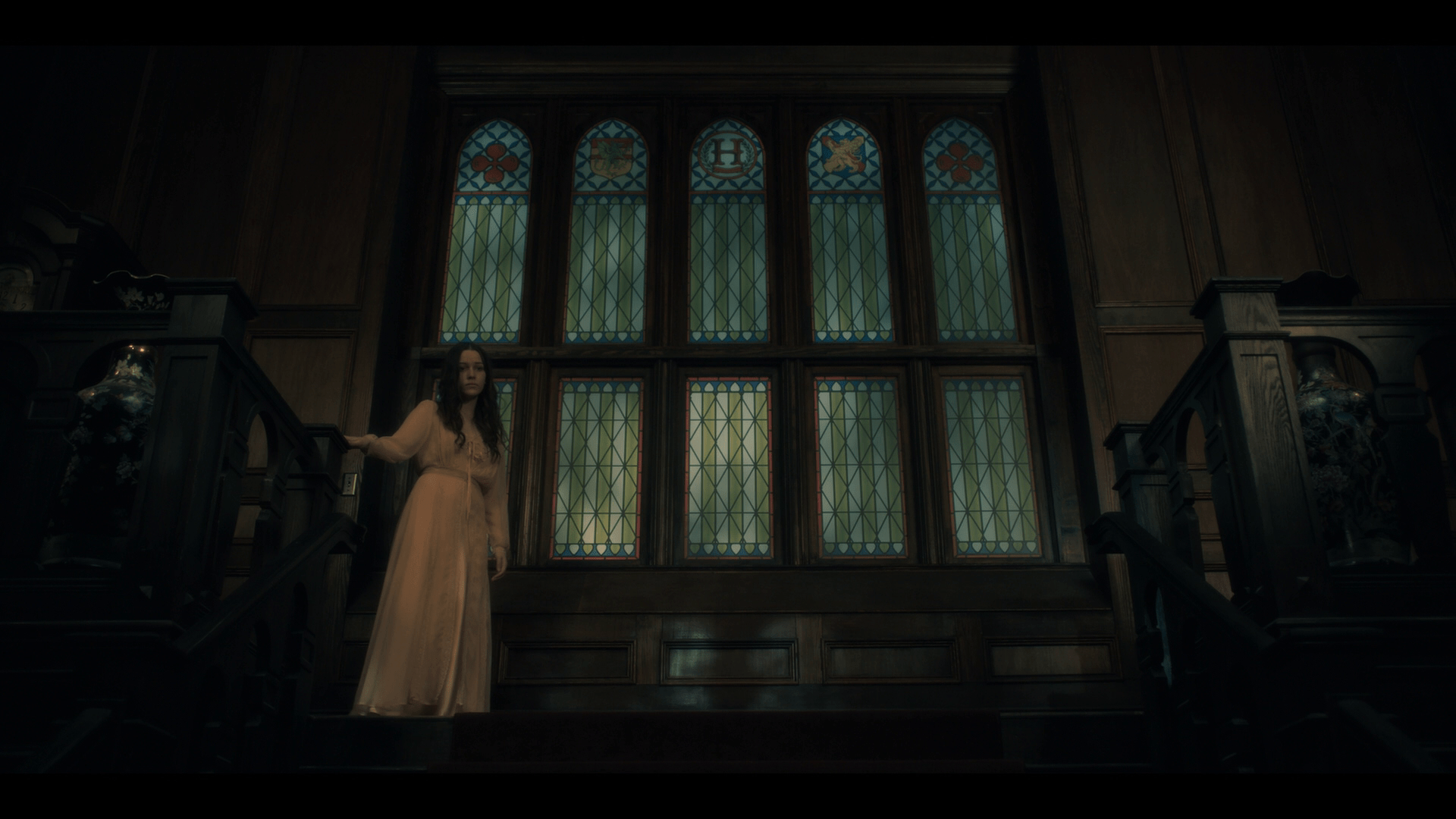
It is one of the most widespread forms of mental illness, so there is always an aspect of it that represents something in other ways. Regardless of one’s traumatic experiences, each person is different and we must be mindful of that fact in society. Nevertheless, trauma is not always a bad thing: there are good parts we can find in who we are and in who we grow up to be.
By uniting ourselves to others, we become stronger than when we are alone. This is why it is so positive and beneficial to accustom ourselves to openness and express our innermost thoughts to those whom we hold close to us. An advantage which we can have is through TV and media. It represents a strong bridge to fandom. Particularly in Netflix’s hit series, The Haunting Of The Hill House.
Chapter I: The Crain Family Trauma Begins With Eleanor And Luke Crain
Netflix’s The Haunting Of The Hill House, from 2018, has depicted trauma remarkably and in a horror-focused narrative at that. The show uses trauma as its point of reference, however, it also uses characters as distinct and personal portraits of trauma. The many characters throughout the series choose not to deal with their trauma or do not realize that they are suffering (as is the case with Steven, who ignores his suffering during his childhood).
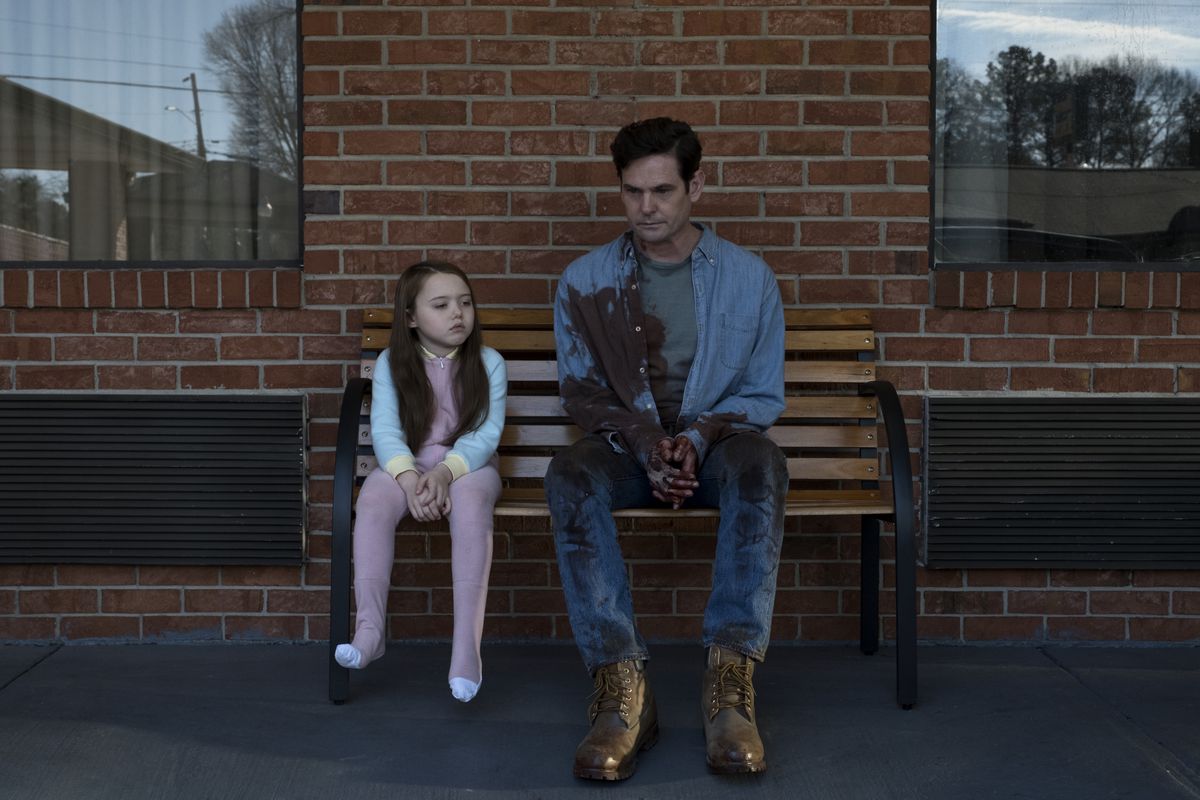
Eleanor and Luke Crain, though twins are the only characters who simultaneously are troubled by their trauma, resent it, and long for it (because it brought them closer to their mother). The twins’ relationship with trauma is so realistic it creates a sensation of euphoria that screams “finally, someone gets it.” Nell and Luke showcase strength and empathy for those around them even despite feeling like the invisible child at times between their brothers and sisters.
Not only will we focus on Eleanor but we will also address Luke, who is closely related to her because he is her twin; we believe he may have shared many of her experiences (by default). They are furthermore the youngest of the siblings and the closest in the regard. The only thing that separates Luke from Eleanor is that he is a male and she is a female; their traumas are identical in that they both fell victim to isolation and being unheard.
Trauma Has A Way Of Following You Both In Past And Present
Eleanor Crain’s famous line is one that resonates with many. It was one of the lines throughout The Haunting of the Hill House that most remember being the most gut-wrenching. At least to me and various other Redditers (( “R/HauntingOfHillHouse – What Stuck with You the Most?” 2017. Reddit. 2017. )), it was too. The quote serves to illustrate the trauma from that point forward; this scene made it clear in that instance where Nell’s trauma stems from and how it continued to affect her in the present, both in the dead and alive state. (( The show involves the interlocking of past and present events, so Nell will be mentioned, and displayed, in both time periods as this episode illustrates both. ))
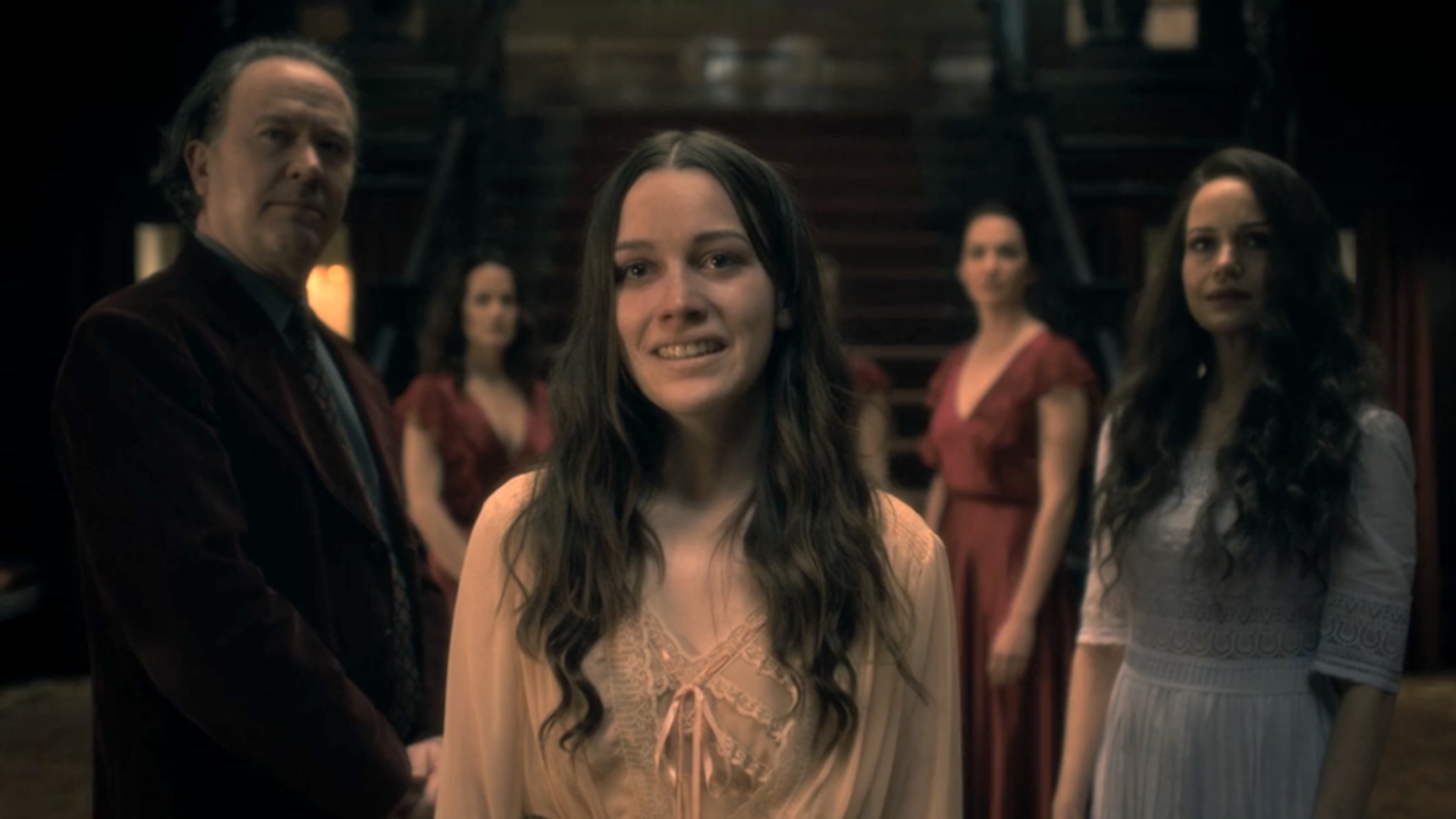
Eleanor Crain has always been a person who was invisible; everyone would overlook her even when she was a child. Neither her mother nor father could see her when she was invisible, not even her family could sense that she was there and that is the most dispiriting revelation anyone could ever make to a child. To feel unseen and unheard as your family is talking around you, not seemingly bothered by the fact that you are missing, is… tragic. In Nell’s mind, she believes that no one will save her since they are all too busy worrying about themselves to help her. The first – and only – episode that showcases Eleanor’s reoccurring trauma is “Two Storms.” (( Child “Eleanor Crain” is played by Violet McGraw. )).
Chapter II: S1, E6: “Two Storms” — “I Was Right Here The Whole Time And Nobody Could See Me”
The episode features a bigger motif of “storms,” as it is titled “Two Storms;” the episode is further filmed in one consecutive shot (“a long take”) throughout the scene at the funeral home. It is a fascinating fact, but it is all the more interesting when you take a look at how it was shot. As the family gathers in one location since leaving the Hill House, unresolved issues between all of them remain. And to make matters worse, baby Eleanor Crain disappears in the middle of the storm.
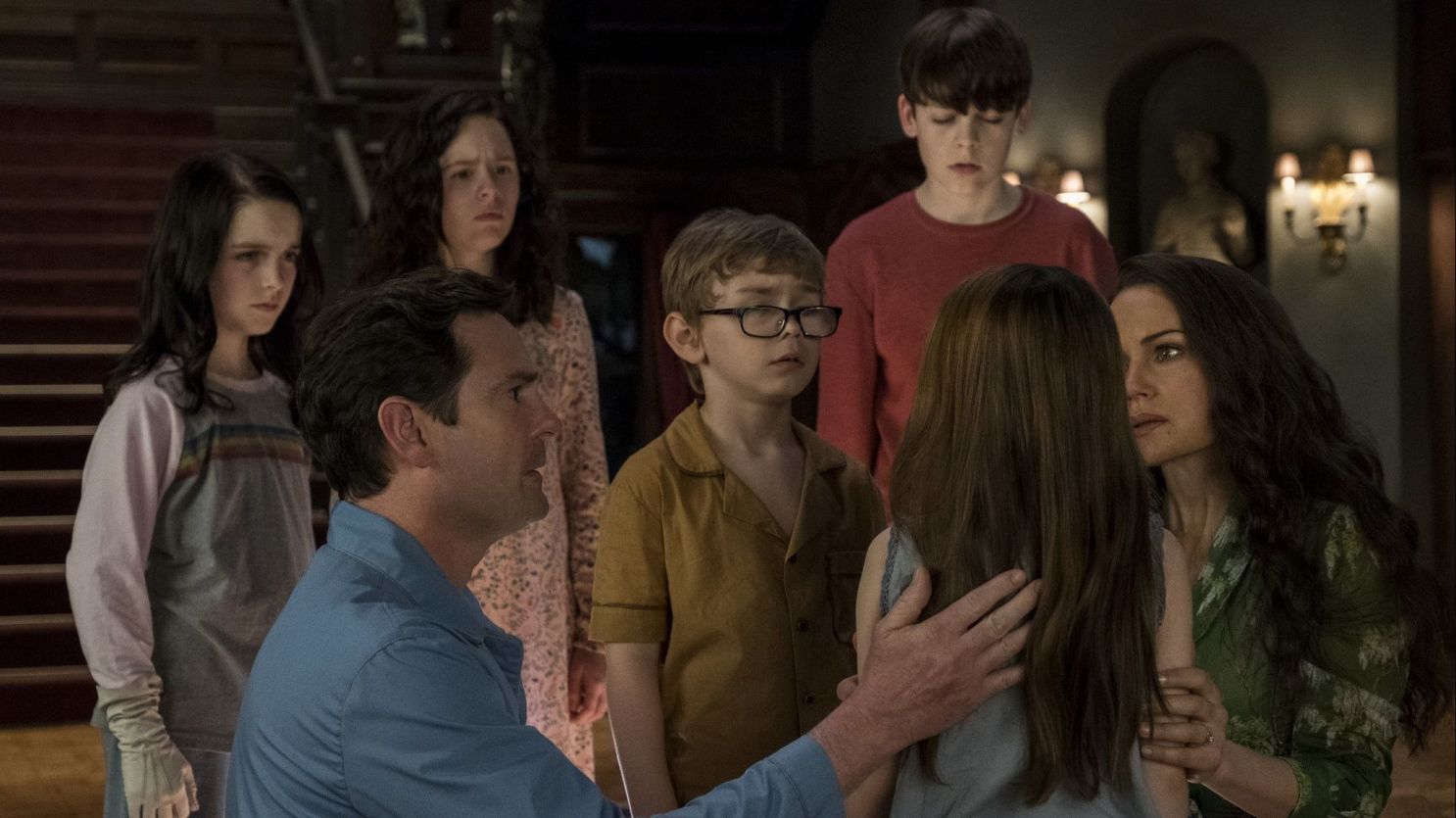
Given everything which has happened in the past, and everything which is happening present – the Crain family is unbelievably stressed and rightly so. The valuable lesson here is that she was always visible, yet no one took the time to notice her. She was there the whole time, yelling for them, she was shouting and screaming loudly for no one to hear, not even once. In the present day, however, all most people can recall about Nell is her quirky characteristics, but the memories are fond ones. The father talks about how Nell would write Santa letters and explicitly only ask for gifts for her siblings, never herself.
He goes on to smile to himself because they had no alternative but to get them as it was apparent that Nell was writing precisely what they wanted. Otherwise, she would know that Santa was not real – something she cherished, professedly. She was selfless. Regrettably, she was the one to die first… In a sense, I think they all feel that it should have been one of them instead. Especially Luke. Moving forward, although they are happy and celebrating Nell’s memory, odd things begin to happen to each of them. Odd things that would indicate someone or something else is in the room. Nevertheless, they persist as they don’t really believe in ghosts anyway… right?
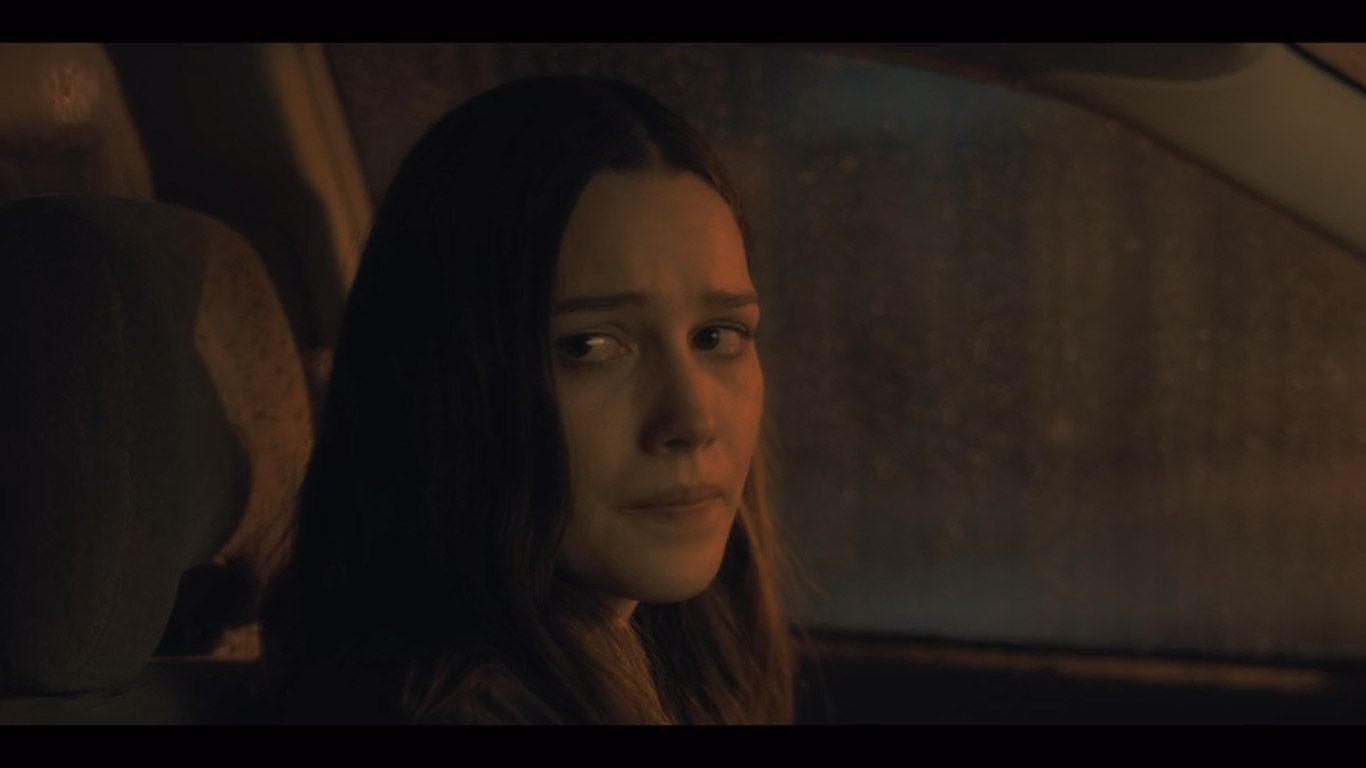
As they ask their father more about their childhood, they begin to argue and call each other obscene names. This continues until Nell’s body tips over in the casket – it is now that they finally have each of their eyes on Nell. As they were fighting, Nell’s spirit was in the room the entire time – although no one could see her. It reinforces the fact that throughout her existence she was invisible.
The rare moments that she did not feel invisible were those that she shared with her husband (( “One evening, The Bent-Neck Lady returns with a vengeance, accompanied by a mysterious “aneurysm” that kills Arthur instantly” )) (( Examining, Lady: “Strange Harbors.” Strange Harbors, Nov. 2018. )), except these were brief due to the very existence of these same qualities that made her feel invisible. No one believed in the bent-neck lady because she was the bent-neck lady. It is painful to be aware of that.
The Source Of Eleanor’s Empathy And Trauma In The Haunting Of The Hill House
This episode has been praised numerous times, but it really is the best portrayal of trauma, specifically with Eleanor Crain (but her attachment to Luke is prevalent as well). Throughout her childhood, many of her siblings were fighting to be the most important one. They all wanted to be the one that has the attention, as most siblings do. Being the youngest in her family, Eleanor Crain was often treated like a star but also sometimes ignored entirely. She would be so quiet that no one would ever know she was right next to them, but she could also be so loud that no one could ignore her if they tried.
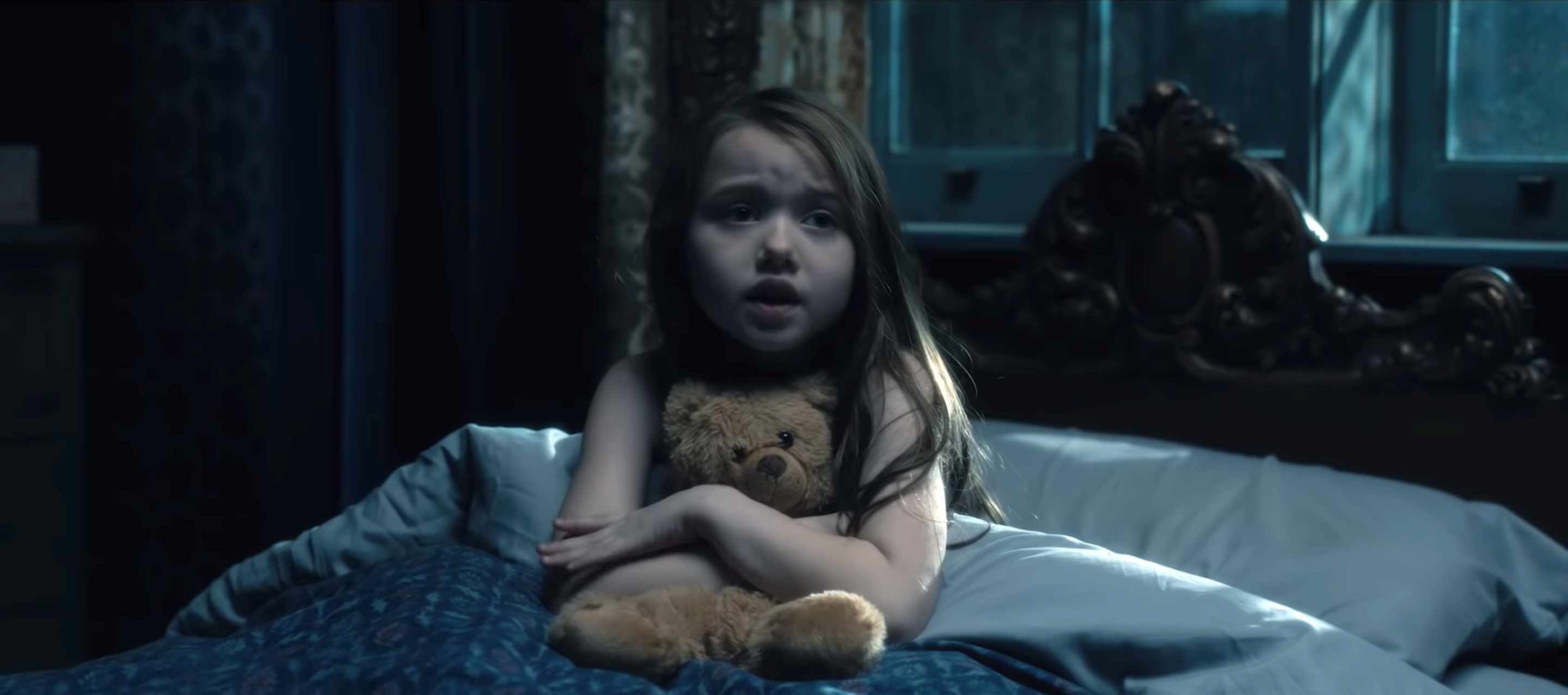
The feeling of being overlooked has been prevalent in Eleanor for the entirety of her childhood. As she got older, it only got worse. Her being disregarded within her family, even after her husband was murdered, made her feel a sense of loneliness that she was not accustomed to. Shirley carefully laid out in the episode that Nell tried to get them together multiple times, including her father, and they never got back to her. She admits they had been ignoring her… and Theo agrees that Nell [just] “always wanted attention” and ended her statement saying that “this was not the way to get it.” It wasn’t that Nell craved attention, it was that she never got it to begin with – but Theo’s trauma is for another time.
Luke Crain’s “Twin-Trauma”
Luke is treated in a manner similar to Nell, as they are both considered as the “black sheep” among the other siblings. At the opening of the episode, they discussed Luke’s situation, noting that he had not only lost his shoes but that he also looked better than he had in months. They speak of him as if he is a “problem child” who continues to f–k up every moment he gets. But it is far from that. Like Nell, she did not “want attention,” she wanted her siblings to be there for her and they weren’t. She wanted them to believe her, and they didn’t.
They left her to hang. (Literally and figuratively.) They ignored her calls, they ignored her problems, and they ignored her pleas… just like when they were kids. That is why Theo puts the blame on Nell. She feels guilty for allowing it to happen. The reason why Luke and Nell are always attached is not that they are twins, although a huge factor because Nell regularly made sure to treat Luke as a human being, something more than just a “problem.”
Luke made sure to treat Nell the same, she was never invisible when he was around. One can argue that they are the only siblings that actually took on their trauma headfirst, instead of simply putting it off like the other siblings. They were also very close to the mother, which could be a factor as well.
Chapter III: The Gang Is All Here For Nell’s Funeral… Including Hugh Crain
The blue hue and dark color palette define the melancholy state of when the dad arrives. The dream-like quality of the episode gives a sense of “afterlife” instead of “current.” However, when the father arrives at the home or day-before-the-funeral, he goes to see Nell’s body. That is after the awkward introduction with his own children takes place. As the shot moves to an extreme wide shot, each of the siblings stand in the frame; as Robson (( Robson, Melanie. 2018. “Five Shots, Twice Disappeared: Staging Memory and Trauma in The Haunting of Hill House (2018).” Mise-En-Scène | The Journal of Film & Visual Narration 4 (1). )) states:
“The edges of the frame do not mark the edges of the film’s world.”
If one looks carefully in the background, Eleanor appears as a ghost, complete with a broken neck. She is still invisible, even after her own death. Even after she dies, she is still standing in the back of the room. Her family, even after her death, continues to make her feel ostracized as if she still stands in the back of the room while being directed to the center.
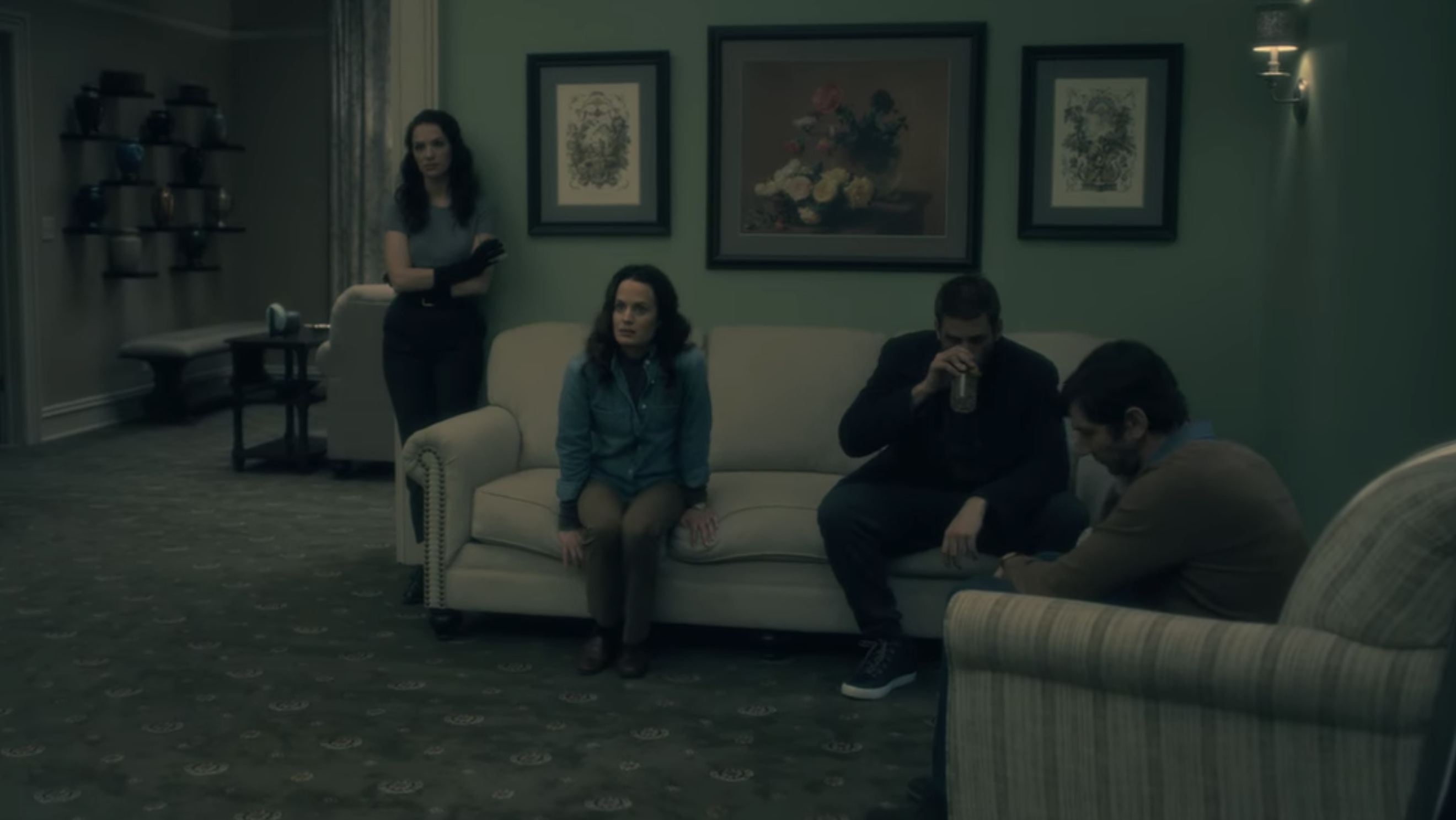
Of the three girls, Eleanor Crain resembles Olivia most strongly. She is quiet and assertive, someone who set goals and fulfilled them, and succeeded in her love life at the same time. (The only one who was “dare I say” happily married?) She has many of the great qualities that Olivia possessed, the ones we do see. Although Theo claims that Nell never “remembered their mother,” she remembers more than she assumes. In many ways, that is why she was chosen. She was chosen to accompany her mother and the father because they were the closest in their ability to understand her. Unfortunately, she was the loneliest of them all.
Eleanor Crain Was Professedly The Glue Of The Crain Family
As the scene from the past is reflected, the mise-en-scene is where it becomes apparent that it was a disturbing experience, and it remains with her even after her death. Around eighteen to nineteen minutes before Nell is “lost,” she is subtly pushed out of the way by her father. In fact, it’s so subtle, it doesn’t appear as though he did. It was a slight push into the back of the home where she winds up seconds later seeing the bent-neck lady. The same bent-neck lady that will show up the night that she dies coincidentally. That same lady will also show up to murder her husband and ruin her life (in many many ways).
When the siblings are fighting over their own selfish concerns, instead of remembering Nell they become so self-absorbed they forget that Nell’s body is in the room. They continue to argue, spite others, and yell obscene things at one another. All the while, they still don’t know Nell “(‘s ghost)” is in the room. Unfortunately, this episode solidifies as well just how empathetic and nurturing she was between the siblings. She appeared to be the force that kept them together as they fell apart at her funeral in the third act of the episode.
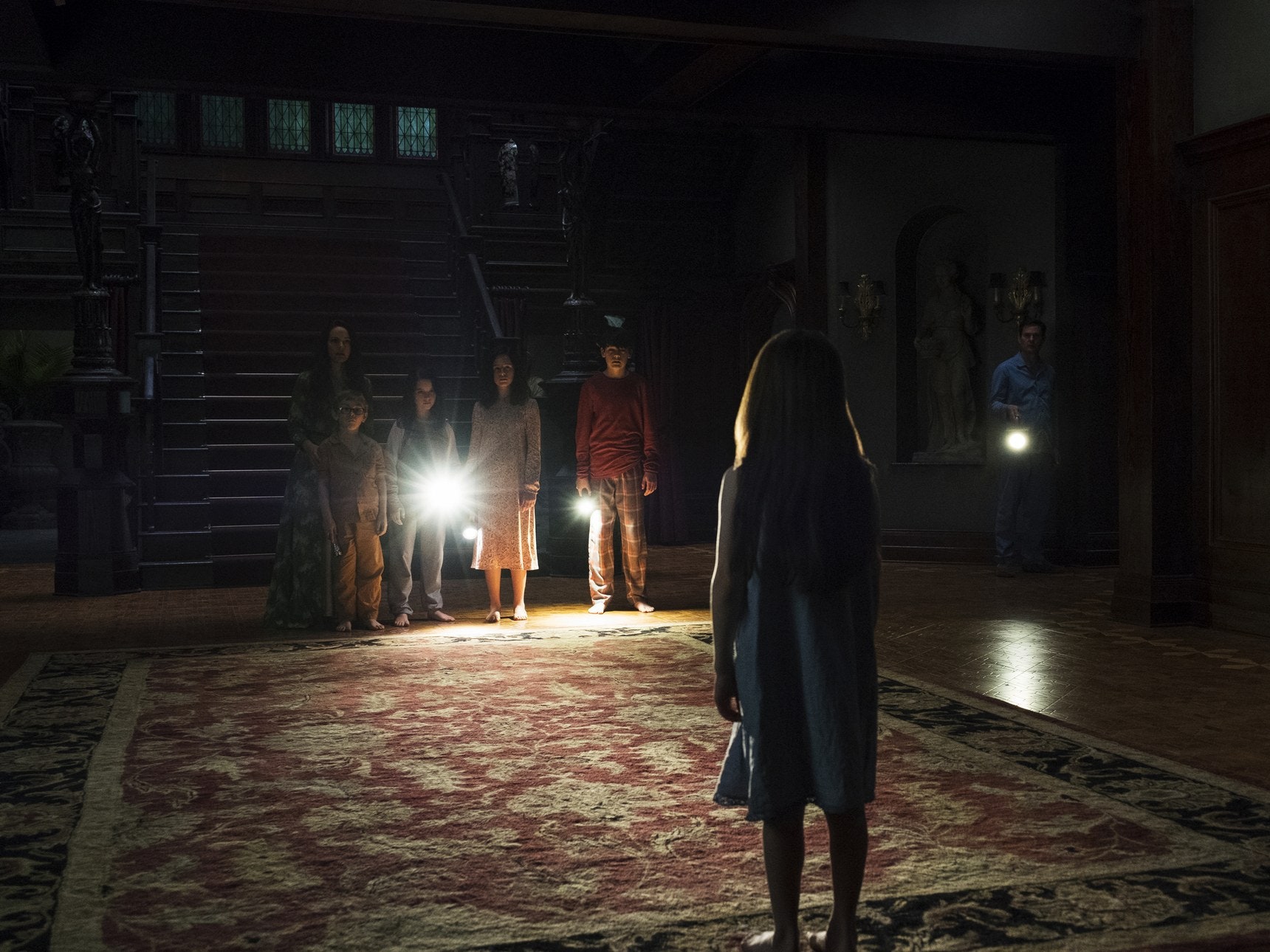
The transition from young Eleanor to deceased Eleanor when she says she was jumping and screaming and no one could hear her is tragic. It is apparent that, during their argument, she was struggling to get their attention, screaming, and jumping. They were, however, too absorbed in their argument to pay attention to her, not one of them was paying enough attention to hear her. And the saddest part is that Luke couldn’t save her. Again. Even after everything. Luke promised to rescue her, but despite his effort, he was unable to keep his promise. A tragic ending, but when is trauma ever resolved so easily? (Especially for the Crain family.)
Chapter IV: An Ode To Eleanor “Nell” Crain
If you take into account the current eulogy taking place, the episode is meant to resemble the memory that the person remembers the most or the one that defines them the best. As Nell cannot “remember” anything, one has to be defined for her. It is incredibly haunting to see that the flashback that defines her comes at the exact time that she disappears.
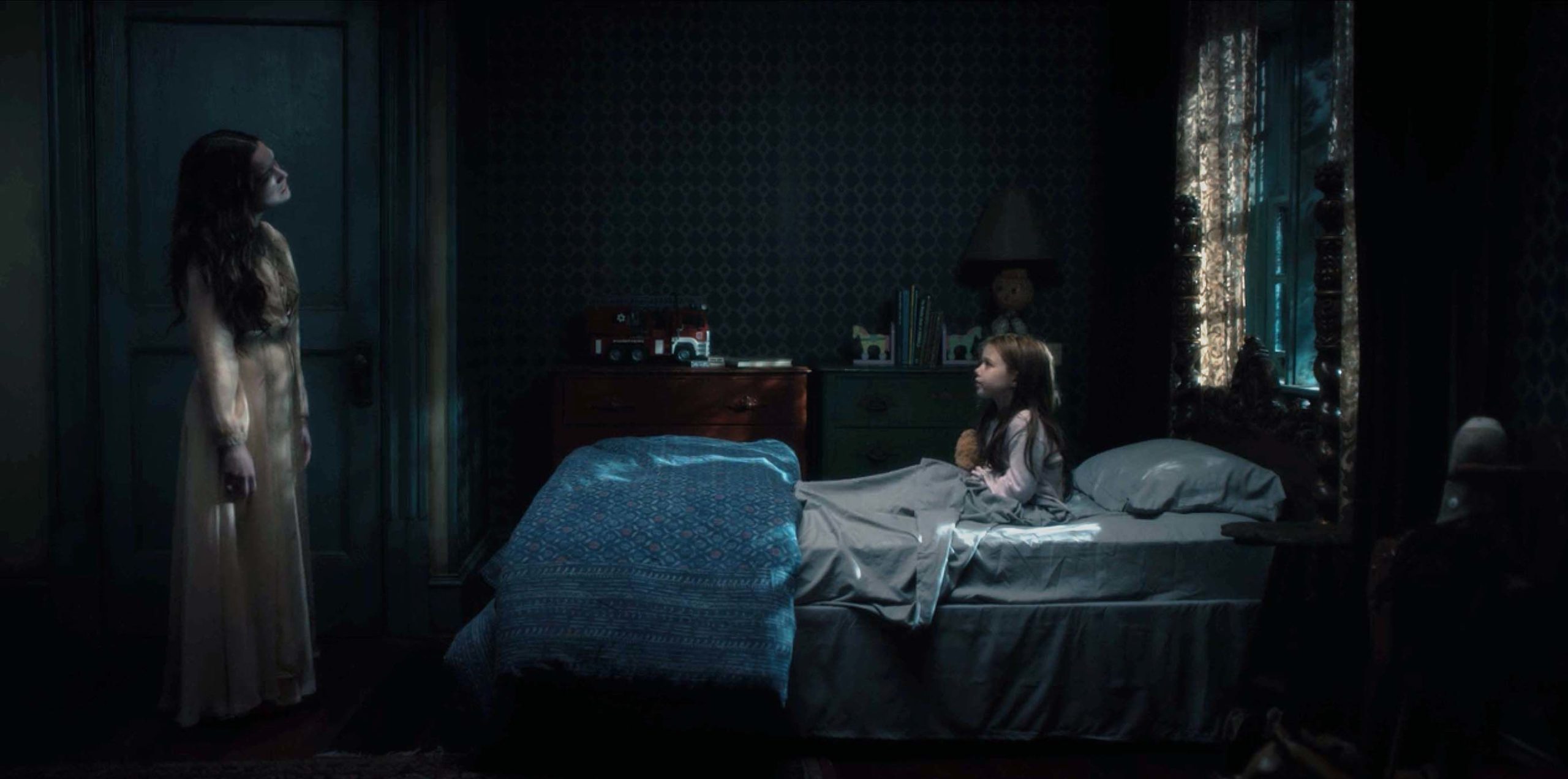
To appear behind the shot, in a dream-like trance, without anyone even feeling her presence there at all feels… dismal. Theo, the one who is supposed to be endowed with the power of feeling, does not even notice her sister is in the same room. That was the heaviest part of Nell’s trauma. Even after her death, she is still invisible. While after her death, Nell gets the peace she deserves – it is only after she dies that she gets it. Having said that, the outcome was always going to be inevitable.
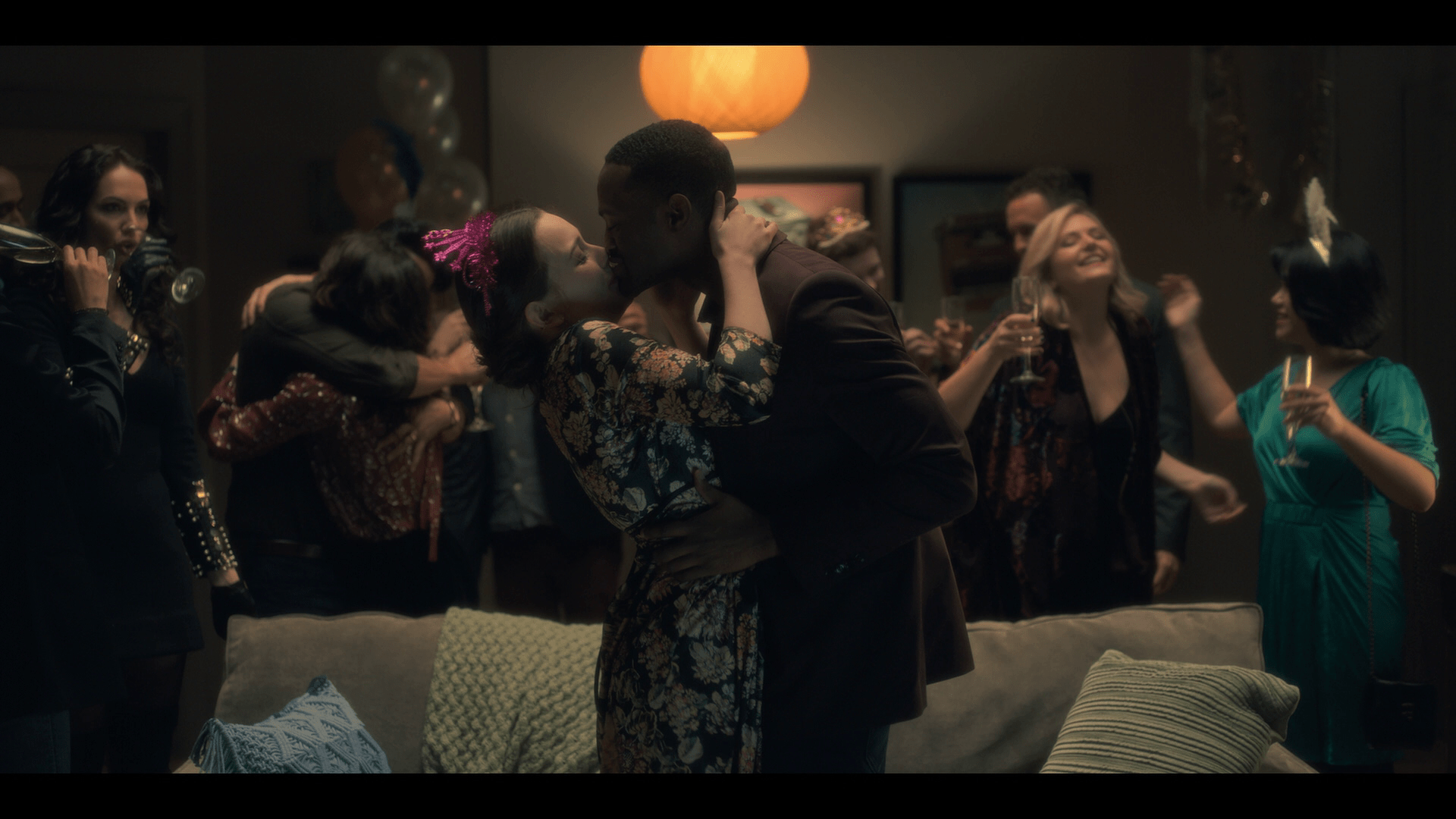
The only way she was going to feel safe in this world was with her mother and she found the only way she could be there with her. It’s a sad demise for a beloved character, but a warming demise, when you think about it, nonetheless. Here is to Eleanor Crain, may we have another in the upcoming The Haunting Of Bly Manor season two October 9th on Netflix.
The trauma that Nell underwent is not discussed in detail (as in the series as a whole) in this piece, but others can be read or watch the series for more about it.
